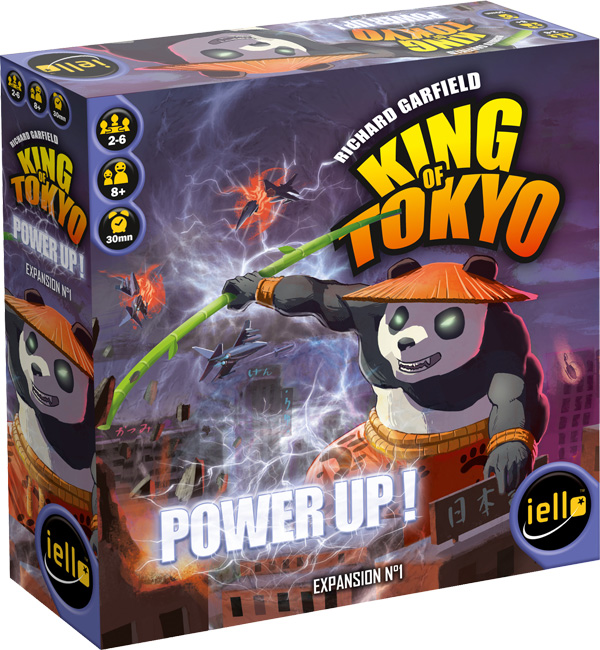 Richard Garfield is one of the most influential game designers out there—despite the fact that he’s not very prolific. He'd be influential even if he’d only designed the one game he's best known for: Magic The Gathering.
Richard Garfield is one of the most influential game designers out there—despite the fact that he’s not very prolific. He'd be influential even if he’d only designed the one game he's best known for: Magic The Gathering.
He recently came out with a new design that’s a fast, fun filler that you can play with kids, adults, and everyone in between. Also old people. But probably not babies.
Components
- Six monster boards , cutouts, and stands. They’re fun creatures, such as a kraken, a giant cyborg gorilla, and a huge mechanical bunny. The differences are cosmetic; there are no special powers for each monster.
- One square game board that shows Tokyo; it’s not really necessary but it’s nice to have.
- One deck of cards, that provide cool mutant powers you can add to your monsters.
- Some counters that show status effects, such as smoke or poison.
- A bunch of energy cubes used to pay for the special powers on the cards.
- Some big, beefy dice with various symbols on them; they’re the heart of the game.
Gameplay
The idea for the game is that you’re a giant monster trying to destroy Tokyo, but you’re also trying to destroy your opponents and keep them from destroying Tokyo. Each monster starts with zero victory points (VPs) and 10 health. Your health will (generally) go down, and your VPs will (hopefully) go up. If you get down to zero health you’re out of the game—and if you’re the last monster standing, you win! The other way to win is to be the first monster to get to 20 VPs.
On your turn, you roll the dice, and then decide what to do with them. You can reroll any dice up to two times, and when you’re done rolling them all you’ll “play them out.” Three of the sides have a 1, 2, or a 3 on them. If you roll three of one of those numbers, you score those VPs. One side has a heart on it, and if you use that you find true love, get married, and raise little monsters. That’s not true; you just heal a health point for each heart you roll.
One side has a claw on it, which allows you to attack other people. One of three things can happen then.
- If no one is in Tokyo or Tokyo Bay—the two spaces on the game board—you can move in there. The benefit of being in one of those spots is that you earn 1 VP when you move in, and if you’re still in there when your turn rolls around, you earn 2 VPs. The downside is that you can’t heal…
- If you are in Tokyo or Tokyo Bay, you attack each monster that’s not in one of those places—one point of attack for each claw rolled.
- If you aren’t in Tokyo or Tokyo Bay, you attack each monster that is. A monster inside one of those places can decide to yield the city; the monster that attacked you now moves into the vacated spot.
The last spot has a lightning bolt on it, and you get an energy cube for each one. At the end of your turn you can purchase one of the three face-up power cards. They add various powers to your monster, such as adding 1 to each attack, or keeping you from taking 1 damage.
Verdict
The only thing I’d change about the game is to add some variety by having each of the different monsters have one unique power. That would add some variety, and make it more fun to play the giant mechanical bunny—besides the fun already inherent in that, of course. Other than that, it’s a ridiculously fun filler—the kind of game you can play at the start or end of the session, or between games. The first edition sold out quickly, but a second edition has just been released. Check it out!









 Richard Garfield is one of the most influential game designers out there—despite the fact that he’s not very prolific. He'd be influential even if he’d only designed the one game he's best known for: Magic The Gathering.
Richard Garfield is one of the most influential game designers out there—despite the fact that he’s not very prolific. He'd be influential even if he’d only designed the one game he's best known for: Magic The Gathering.













